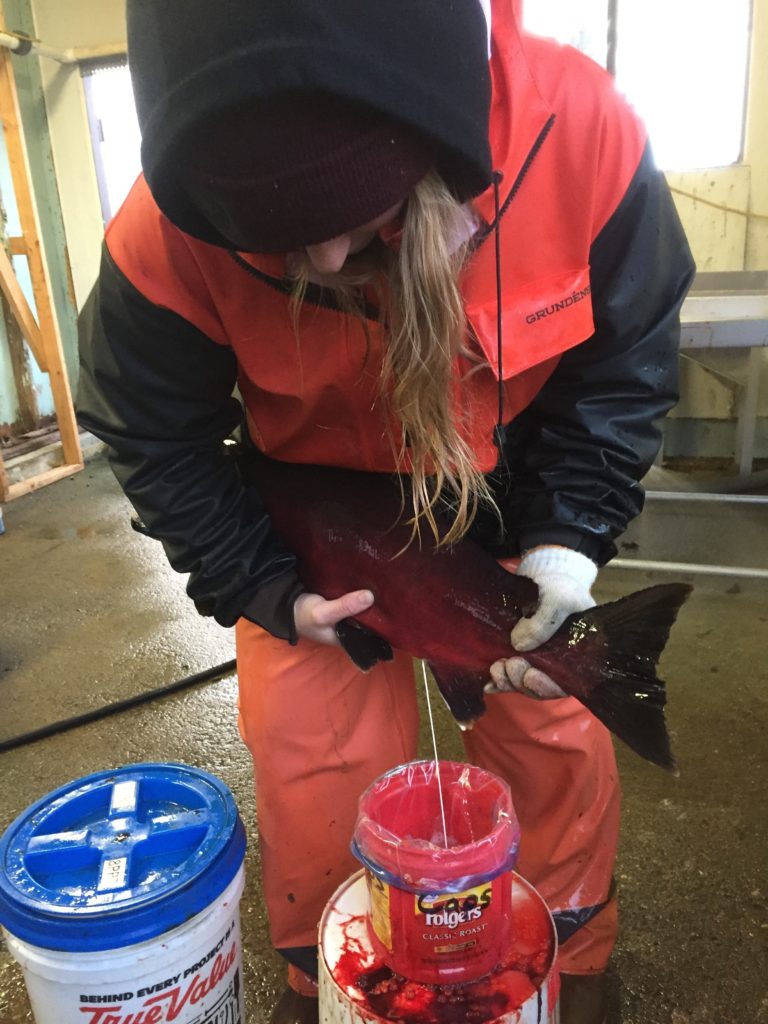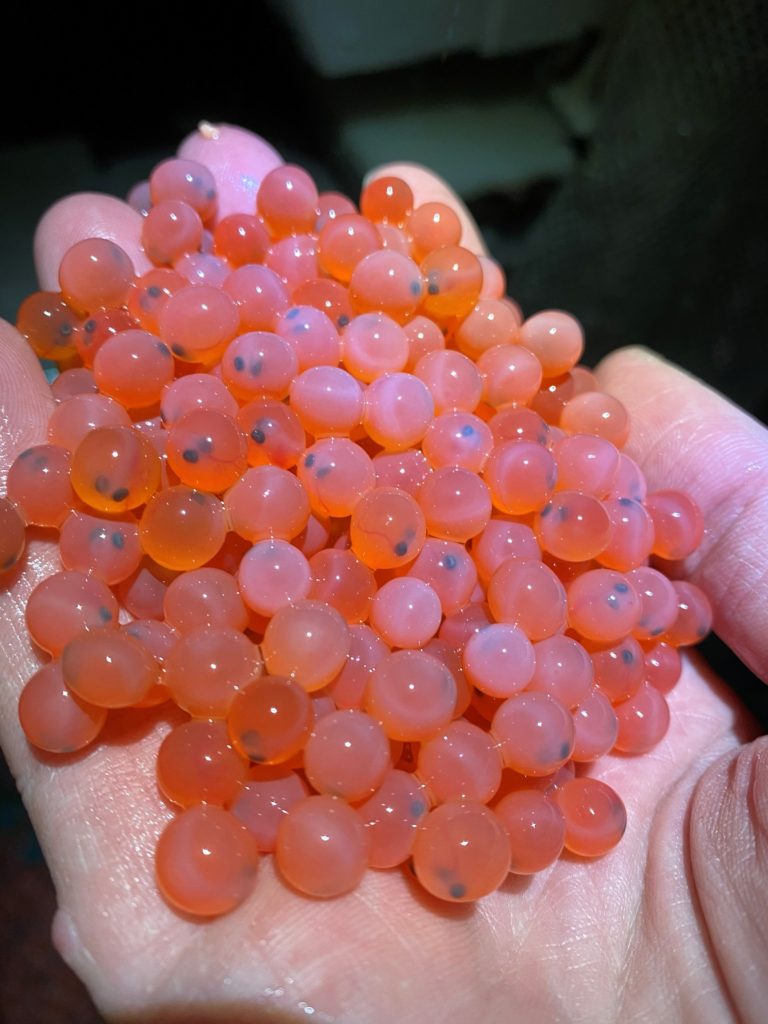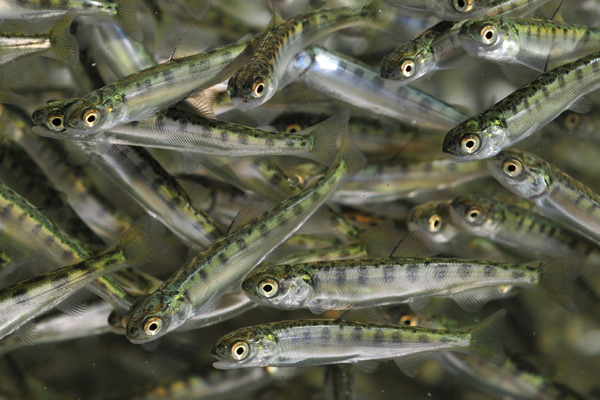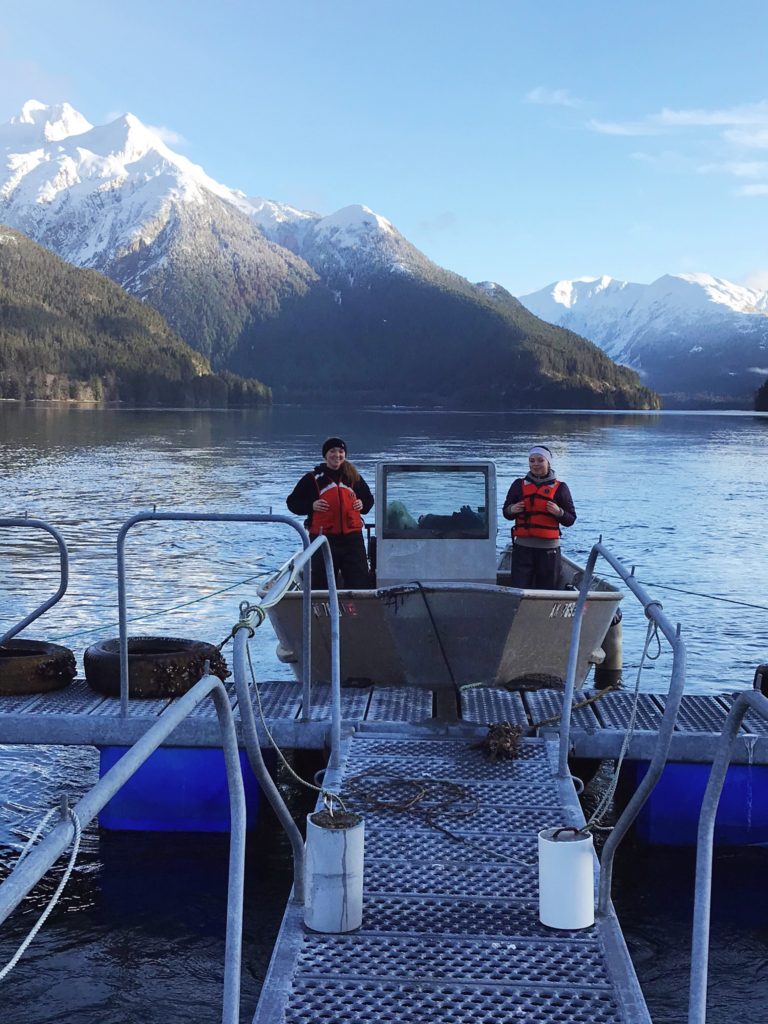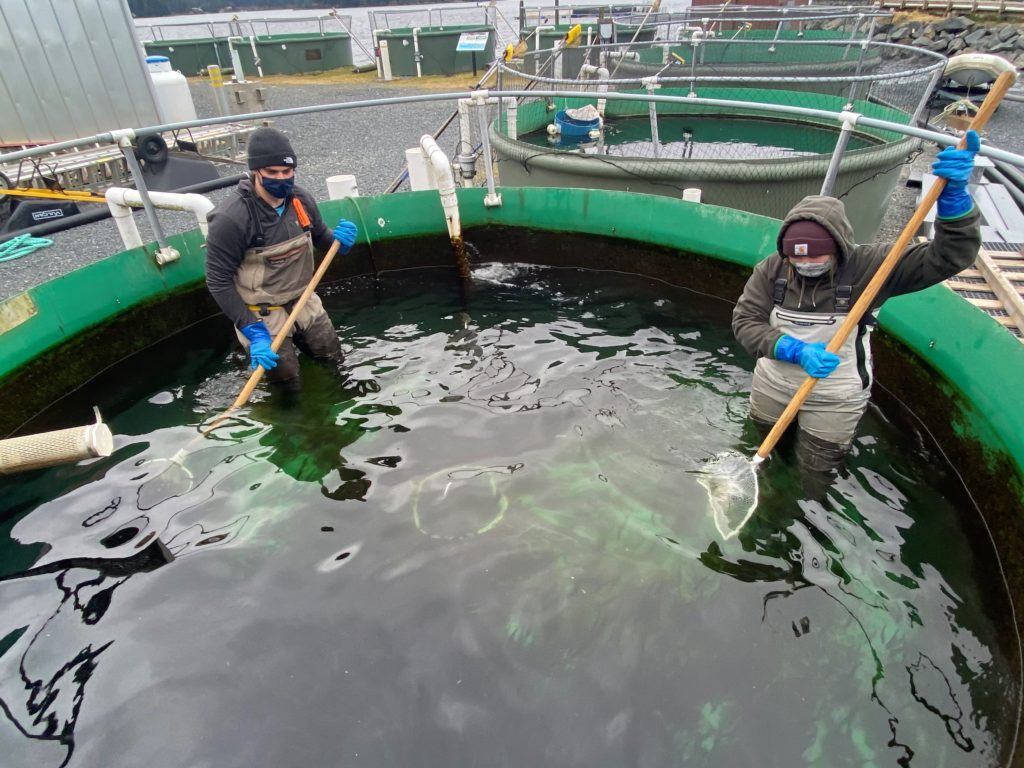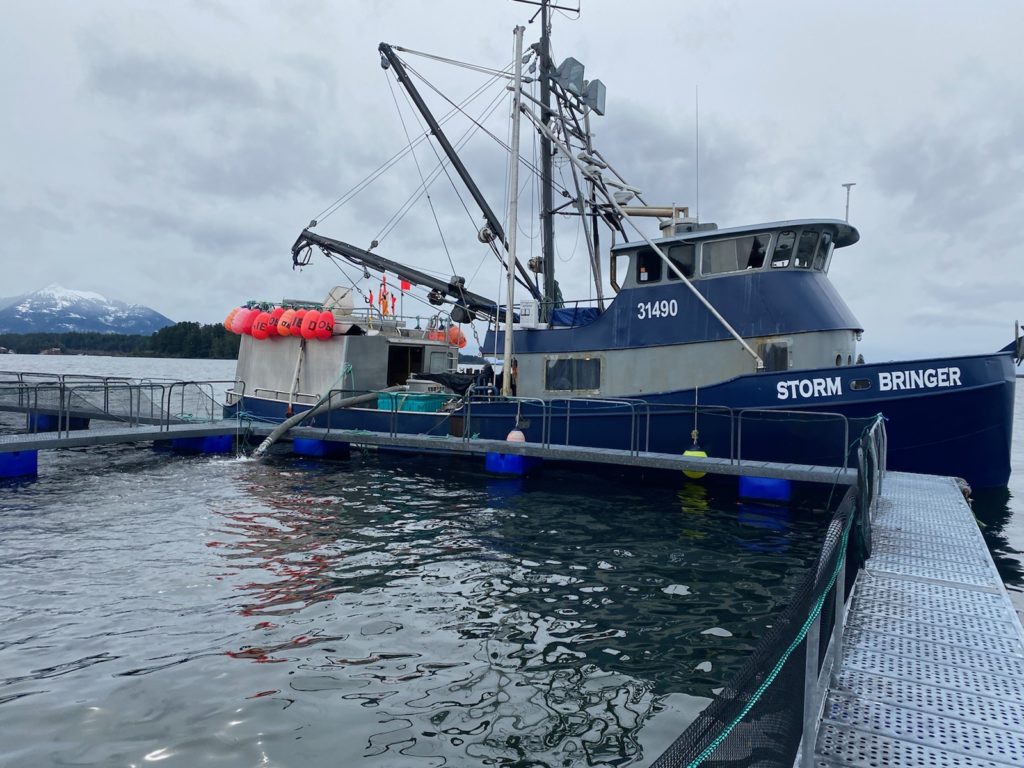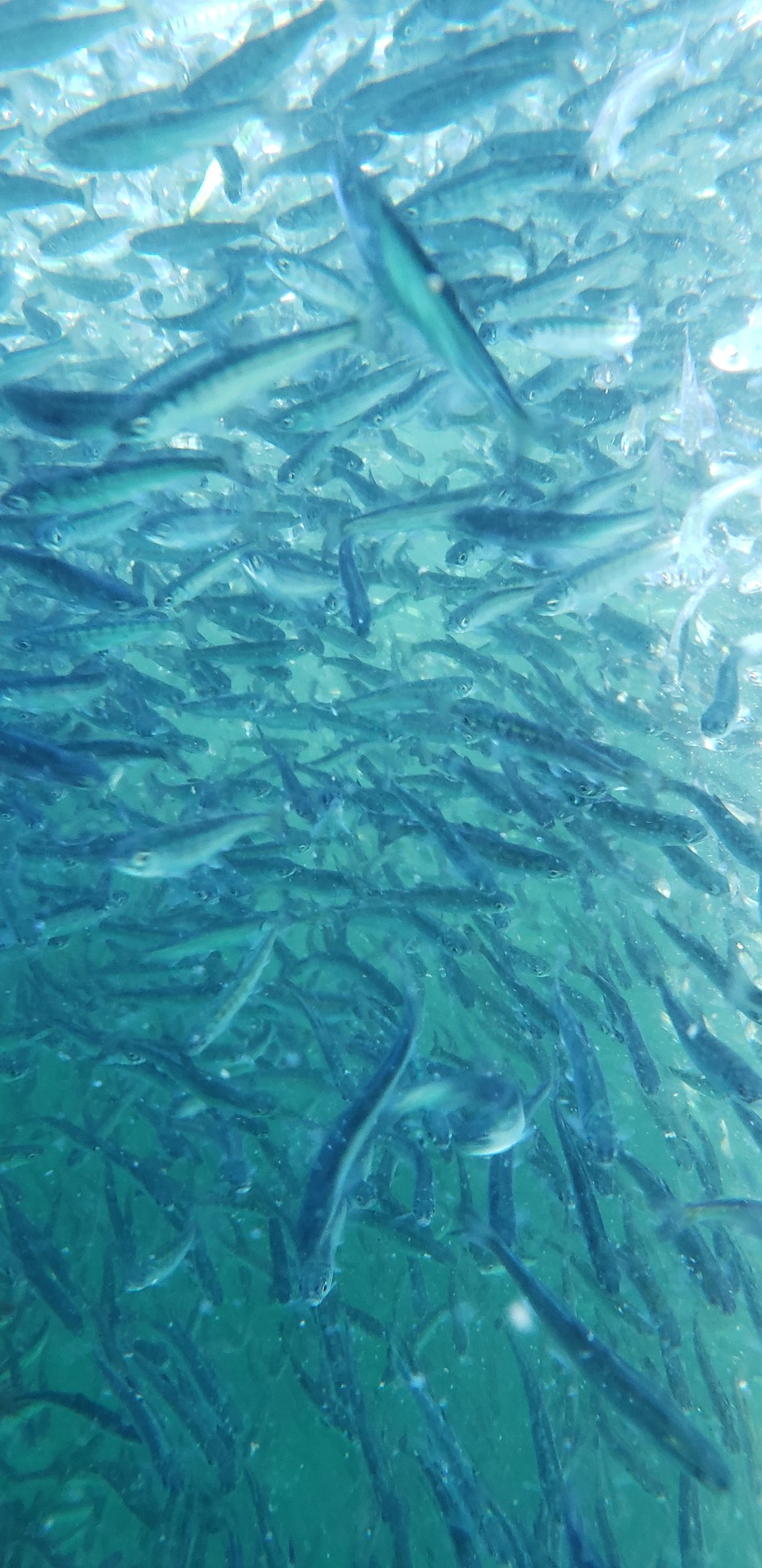
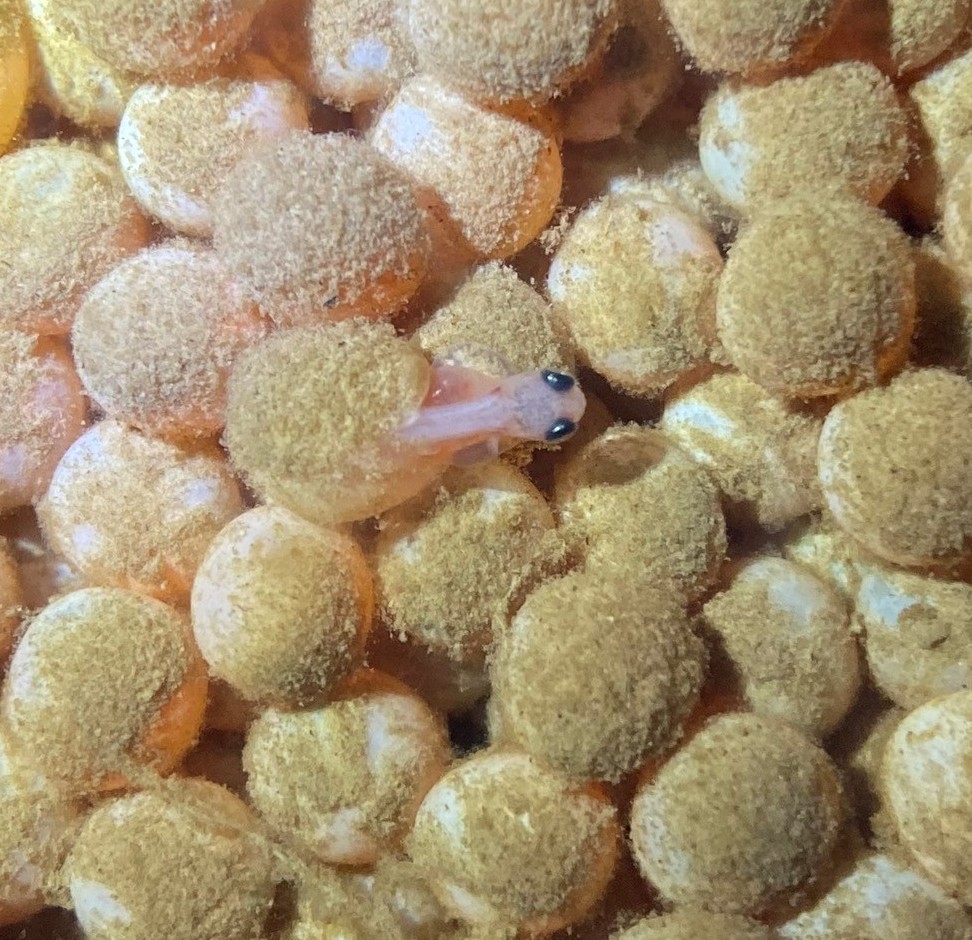
We Do Salmon Right
The Sheldon Jackson Hatchery located at the Sitka Sound Science Center, is the oldest operating salmon hatchery in Alaska and has been educating and training people in Aquaculture since 1974. As the only educational facility of it’s scope in Alaska, our hatchery has trained many of Alaska’s fisheries biologists, fisheries managers and aquaculture specialists. We continue this legacy today through the multiple learning experiences we offer for students, community members and visitors.
The Sheldon Jackson Hatchery is permitted to rear and release on site 3 million Pink salmon, 3 million Chum salmon, and 250,000 Coho salmon. In addition to fish reared and released from the Hatchery, 9 million Chum salmon are reared and released at Deep Inlet a remote site south of Sitka, under the care of the Northern Southeast Regional Aquaculture Association (NSRAA).
Sitka Sound Science Center partners with our local high schools to offer an Aquaculture Class to students. Students are provided hands-on experiences of the salmon rearing cycle, from spawning to release. Students cover topics including salmon egg fertilization, incubation, enumeration of our three species of salmon, pathology, fry development, ponding, Plankton sampling and salt water, net pen rearing of Pink and Chum. We also partner to offer high school students a work study program that immerses high school students into the day-to-day operations of the Hatchery. At the university level we have a partnership with the Fisheries Technology Program at the University of Alaska Southeast (UAS), Sitka campus. The Fisheries Technology Program provides associate degrees and certification in aquaculture and fisheries management. For the post college individual that wants to gain real world experience working in a hatchery, we offer a 1-year fish technician position, where workers develop all the basic skills to work at any hatchery throughout Alaska. Our goal is to not to just incubate fish but also the future of the mariculture industry.
Visitors to Sitka can take part in a tour of the hatchery to learn about the salmon life cycle, history of hatcheries and the important role they still play today.
The SSSC Sheldon Jackson Hatchery strives to “do salmon right”, we do this with a perspective of fish first. Salmon are embedded in our lives and cultures, they deserve respect. It is a privilege to be able to be a part of this cycle and continue to understand their needs and parameters in this changing world.

Facilities
The Sheldon Jackson Hatchery (SJH) operates at the Sitka Sound Science Center (SSSC) to further our goal of education and research. Our current facilities consist of our soon-to-be-improved spawning building, Incubation room, 9 round ponds plumbed for fresh and salt water, a wet lab, and workshops located in both the newly renovated Mill building and bottom level of the Sage memorial building. SSSC has an open flow through system meaning all our saltwater is pumped from our intake at a depth of 60’ and discharges into Crescent Bay. Indian River is the freshwater source for Sheldon Jackson Hatchery. Our freshwater originates in Indian river and is fed by a diversion dam passing through two flood gates at our screened intake. The water is then gravity fed to our property, where it is treated passing through a drum filter and UV disinfection prior to use. SJH also has one 40’ X 40’ net pen for Pink salmon rearing and two 20’ X 40’ net pens for Chum salmon rearing. The two 20’ X 40’ pens are also used for overwinter rearing of Coho salmon from September to March. The net pens are anchored in front of the hatchery in September through May, then moved to storage at the Medvejie Hatchery the rest of the year.
SSSC has recently completed the plans to construct a new salmon spawning and incubation building on its historic campus. The building will replace a 1970s era spawning shed that is not only long past its useful life but also not efficient in delivering our educational mission or in hatchery operations. A new 1100 square foot building will co locate our incubation equipment for rearing salmon with our spawning operation. The structure will be a safer and more efficient platform for spawning returning fish, provide an educational facility for aquaculture students and a better showcase of aquaculture to visitors near and far.
The incubation facility has been planned since 2012 when Sitka Sound Science Center completed its first facility master plan. But became a high priority for the board and staff two years ago.
The Northern Southeast Regional Aquaculture Association (NSRAA) based in Sitka and the Douglas Island Pink and Chum organization based in Juneau provided funds for designing the new structure which was conducted in collaboration with the SSSC Building Committee by Tetratech, an engineering and design firm with 40 years of experience designing hatchery buildings in Southeast Alaska. The design includes a new spawning deck above the raceways and an incubation building that will replace the current spawn shed.
The goal of this project is to create a functional and efficient set of hatchery spaces to improve aquaculture operation and provide a better educational environment for fisheries instruction and visitor experiences. Importantly, the new building will open additional space in the Sage building for wet labs. M.J. Murdock Trust and the Rasmuson Foundation are the major funders for the project. Cargill Inc. has also supported the project which is currently under construction.
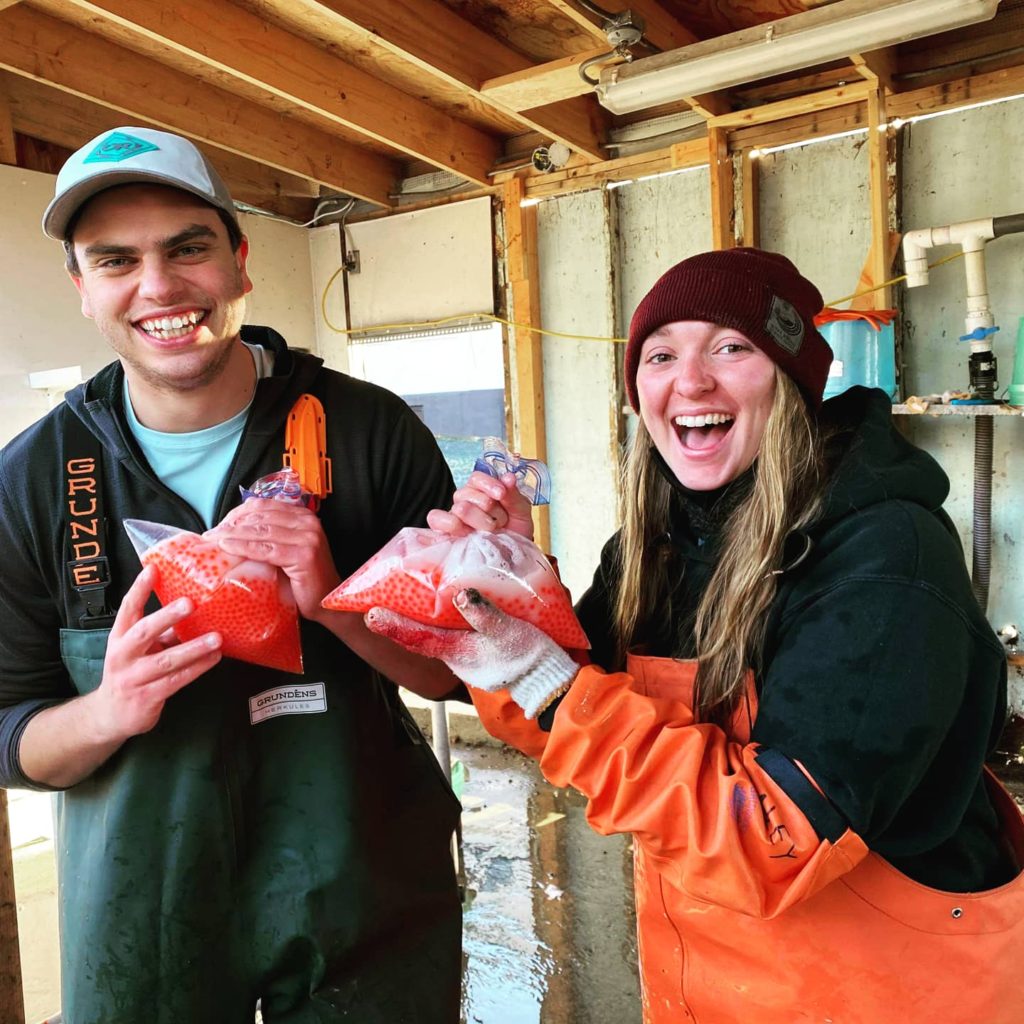
Spawning and Rearing
In regard to the hatchery, Spawning refers to the process of assisting fish in their reproduction cycle. During this process, we collect and euthanize the adult salmon (referred to as brood stock) in order to remove the eggs out of the females and fertilizing them with milt from the males. Spawning for Pink and Chum begins in late August/ early September and runs through October for Coho.
Once the adult brood stock begins swimming upstream and enter the raceways, it takes a few weeks for them to be ready to spawn. Appropriate timing to begin spawning is determined by squeezing their bellies to assess “ripeness”. The softer the belly the more ready they are to spawn. Once the fish are determined to be ripe, a large crane is used to remove them out of the raceways. The fish are then sedated in a tote of water pumped with carbon dioxide. Sedation allows for a fast and humane euthanasian. When Spawning Pink and Chum, the eggs of multiple females are mixed with the milt of approximately half the number of males in order to preserve genetic diversity. The eggs are soon after rinsed with cold freshwater to remove impurities that may lead to fungus or bacteria growth. Eggs are then placed into incubators to develop. Coho are spawned slightly differently with a one-to-one male/female ratio and each pair’s fertilized eggs are kept isolated until tissue samples from the adults provide evidence that each batch is without bacteria kidney disease (BKD). BKD is passed from parent to offspring, and it is the responsibility of hatcheries to prevent disease transmission when possible.
Once the eggs have reached the Eyed stage, they are shocked and picked to separate the viable eggs from the unfertilized. The viable eggs are left in up to 32 NOPAD incubators to be wet/dry otolith marked and followingly hatch. Once hatched and develop past the alevin stage, we can begin feeding them for growth. The pink and Chum are reared to at minimum 2 grams over approximately 8 months, and the Coho are reared to at minimum 16 grams over approximately 18 months. The fish are imprinted in Crescent Bay and all salmon are released by mid-May.
